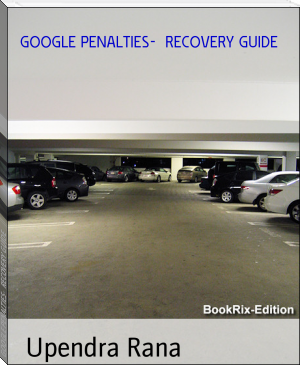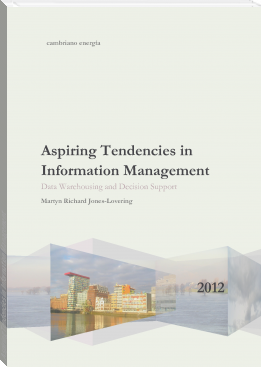GOOGLE PENALTIES- RECOVERY GUIDE by Upendra Rana (accelerated reader books .txt) 📖

- Author: Upendra Rana
Book online «GOOGLE PENALTIES- RECOVERY GUIDE by Upendra Rana (accelerated reader books .txt) 📖». Author Upendra Rana
Yet, a successful disavow will bring you some boost in terms of rankings. If you were to be penalized and didn’t submit a disavow file, you would probably rank on Google’s pages that have more than two digits. A successful submitted disavow file will bring you back on the track and even if it won’t place you on the same position that you used to be, it will still give your site the possibility to grow and accede on higher positions.
A Reconsideration Request Is Required for the Google Disavow File to Be Processed
There is a theory amongst many people who have an extensive experience with disavowing links that the disavow will take effect only when a major change happens, such as the filing of a reconsideration request or a Penguin algorithm update.
This myth has been consistently denied right by Google and employees, even when directly confronted with the question. The disavow tool documentation is pretty clear: “…this information will be incorporated into our index as we recrawl the web and reprocess the pages that we see”. Other instances of Q&As with Google employee John Mueller include him stating time and time again that “as soon as
you submit” the disavow, Google uses it when recrawling pages and that “it’s not something that is only run periodically”. But Shepard’s experiment seems to be replicated by other sites that disavowed links a few weeks before Penguin 2.0 but only saw significant effects after the update. These cases might shake Google’s statements initially, but at a closer look they are still inconclusive. For one thing, it is very likely that the sites really were affected by Penguin 2.0. For another, it is difficult to say what the effect should have been after the disavow – maybe it wasn’t as big as the site owners expected?
Disavow Preemptively All Links
Since Penguins, negative SEO has been the webmasters′ worst nightmare. Unethical webmasters started building unnatural linkbacks for their competition and Google has been accused of unfair penalties. This is where the Disavow tool came into play.
If you want to disavow links that can potentially harm your site, even though you haven′t seen any decline in traffic or rankings from Google, it is pretty understandable. Suspicious links should always be treated with caution and they must be taken care of immediately, before they actually have an effect on your rankings. As a general rule though, you don’t need to deal with unnatural links if you haven’t been involved in link building. If you notice a drop in rankings, don’t jump to conclusions. Give it a little time. Wait a day or two, they might recover. Bad linkbacks might not even be involved and you will have to dig deeper to discover the true reason behind the drop. But if you’re aware of things done in the past by you or someone on your behalf, it might be a good idea to clean it up.
Cyrus Shepard made an interesting experiment, in order to find out how much damage can one do to his/her own site using the Google Disavow tool. He disavowed every link pointing to his website (over 35,000 of them), with no reconsideration request being filed. After 2 months, nothing happened. No drop in traffic. It has been suggested
that the tool has built-in safeguards that protect you from disavowing good links.
Where do you draw the line is really up to you. Still, it would not be a very good idea to preemptively disavow natural links that generate traffic and improve your rankings. Take a little time to check them all manually. It will be worthwhile on long term.
I Need to Disavow All TLDs for blogspot.com Unnatural Links
Actually, you don’t. What you should focus on and what you should disavow is the .com version of a blogspot page, as it is the canonical one. So, no need to worry about the .ca, .co.uk, etc. version.
And as every affirmation should be backed up with a strong argument, you can watch John Muller, Google’s representative talking about this in a hangout last spring. He is stressing on blogger specifically. He mentions that there are all this TLDs for bloggers and depending on your location you will be redirected to your local version and all of these local versions have a rel canonical. If you find something problematic on your site or blog that you need to disavow and don’t want to be counted, you’d just need to submit the .com version instead of the local version because the local versions are set up to be the canonical versions.
So, long story short, such is the case, submit for disavow only the .com version of blogger.
I Don’t Need to Disavow Unnatural Links Coming From
Deindexed Sites.
Although a simply Google search with the query “disavow deindexed site” will lead you to dozens of sites implying that this action would be simply worthless, we really recommend you disavowing unnatural links even if they are coming from deindexed sites. Why, you might ask. Well, first of all, even if a site gets removed from the search results completely, there is no certainty that that site won’t come back in rankings. And secondly, sometimes links from non-indexed pages can still be passing PageRank.
Therefore, disavowing unnatural links coming from deindexed site is a necessity, fact confirmed by Google representatives.
DMOZ is a Veridic Source! I Do Not Need to Disavow the Scraper DMOZ Sites.
DMOZ is indeed a veridic source. Yet, whether to disavow or not the
DMOZ scraper sites, that’s another story. And quite an interesting one as the one creating a bit of confusion here are Google’s representatives themselves.
John Muller said initially that Dmoz scrapers don’t need to be disavowed unless the original Dmoz link was an unnatural one. Yet, less than one year later from that statement, on Google’s Product Forums, topics such as Manual action because of DMOZ scrapers appeared which made us think more on this matter.
Yet, in March last year, when asked if do we need to disavow Dmoz scraper sites, Google’s representatives said a firmly “Yes”. John then stated that for the most part, the algorithm tries to recognize these scraper sites and ignore them. His answer is quite vague on this matter
as he continues by saying that if “you see these as a problem, and you want to be sure that Google handles them right…then by all means just put them in a disavow file.”
Obviously there are a lot of things to be debated here, starting with Google’s conflicting and inconsistent answers. Yet, as it is better to be safe than sorry, if it is the case, DMOZ scraper sites should be included on the Disavow list.
GWT Links are enough for a Google Disavow
From our experience, we are inclined to say that this is a myth and links coming from GWT are not enough. It is true that it depends on the size of the site also but Google is known for not reporting all links. We had a lot of stories from our customers saying that Google turned down the initial reconsideration request due to missing link. The interesting thing was that those links were not found in the GWT data.
Google says (or at least some of its representatives) that one should mainly concentrate on the links coming from Google Webmaster Tool and that’s about it. Yet, Google’s spokesman John Muller is a bit more cautious on this matter and states that you can pretty much pull out the information you need from GWT but depending on the type of site you have and the size of your site and how you process your site’s links, maybe one of the third party tools makes it a little bit easier for you to get that information or to process that information.
When asked whether one should worry about links that cannot be found in the GWT, the same J. Muller responds that if you’re aware of a general pattern that you see visible in GWT [...] then that’s something you’ll see a sample of in GWT and it still makes sense to clean up the bigger problem which you might not directly see in GWT. [...] Using third party tools sometimes makes it easier.
It wouldn’t be the first time when Google is not acting according to its official position. We do recommend not relying on links coming from GWT as experience showed us different.
I Should Disavow 50% of My Unnatural Links and See What Happens.
Making a disavow file can really be a burden and a time consuming process. Yet, you have to correctly identify ALL the links that caused the penalty and you have to visit ALL of them to see what this is abot in order for the disavowing process to be successful. The question should not be whether you should go from 60% unnatural links to 40% but rather cleaning up all unnatural links, as John Muller stated.
To make things a bit easier for you, in the case of a manual penalty, in the message you receive from Google you may be given some examples of problematic links. Don’t take those few examples as the source of your problem. They are only indicative and only disavowing them won’t solve your problem. These are just examples meant to give you a
“flavour” of the types of links considered unacceptable by Google. As stated, the disavowing process is a time consuming one. Therefore, you can walk blindly through the lawn of unnatural links trying to correctly identify the ones you’ve been penalized for or you can use tools to quickly outline the links that caused the penalty.
You Need to Remove Links to Escape Penguin.
A lot of controversy hovers over this issue. Yet, instead of arising even more controversy, making all sort of assumptions and beating around the bush without any tangible results, let’s go straight to the source and see what Google has to say on this matter.
It′s always a good idea to clean up unnatural links pointing to your site. Matt Cutts reiterated this whenever he got the opportunity. In an interview from October 2012, he takes it a step further and states that, in order to benefit from this tool, link removal is mandatory and you cannot recover from a penalty with just a disavow file, because the system simply doesn′t let you:
″Google can look at the snapshot of links we saw when we took manual action. If we don’t see any links actually taken down off the web, then we can see that sites have been disavowing without trying to get the links taken down″, said Matt Cutts.
Yet, on a hangout from February 2015 John Mueller from Google was asked whether it was better to remove or disavow when doing a
Penguin cleanup. He answered that “Penguin is an algorithm, so it’s not really going to try to read your emails and figure out if you’re doing the right thing in trying to get that cleaned up. So, with regards to algorithms that look at these links, obviously not having those links on the website is a great thing because then we don’t have them to take a look at. If they’re in the disavow





Comments (0)